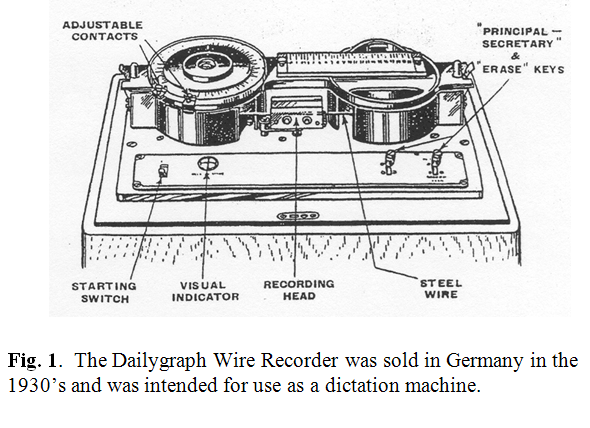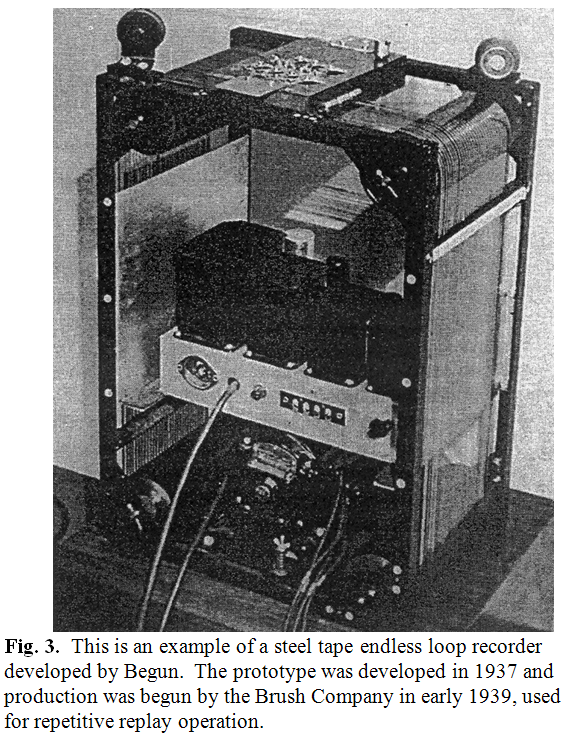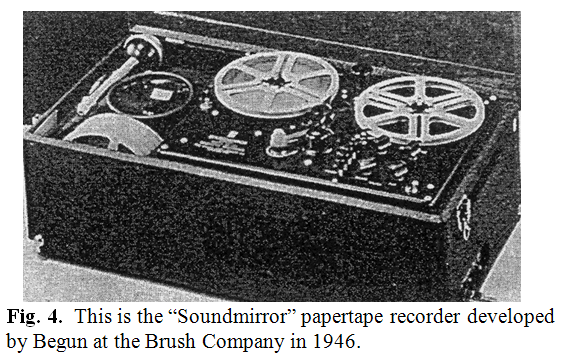March 2010 – History
Scanning the Past: A History of Electrical Engineering from the Past
Submitted by Bob Morrison, Editor
Copyright 1996 IEEE. Reprinted with permission from the IEEE publication, “Scanning the Past” which covers a reprint of an article appearing in the Proceedings of the IEEE Vol. 84, No. 8, August 1996.
Semi J. Begun and Magnetic Recording
Fifty-five years ago this month, the PROCEEDINGS OF THE INSTITUTE OF RADIO ENGINEERS (IRE) included a paper by Semi J. Begun on magnetic recording and applications for radio broadcasting. At the time, the author was employed as a research engineer at the Brush Development Company in Cleveland, OH, where he worked from 1938 to 1971. He made numerous contributions to the technology of magnetic recording and was elected a Fellow of the IRE in 1952.
Begun was born in Danzig, Germany, in 1905. He received the Master’s degree from the Institute of Technology
in Berlin in 1929. He earned a doctorate from the same institution in 1933. In 1929 he joined the firm Schuchardt AG in Berlin, where he did developmental work on a steel magnetic recorder known as the Dailygraph, which is shown in Fig. 1. This machine featured a cartridge with two wire wheels and could be used in offices for taking dictation or to record telephone messages. In 1932, the International Telephone and Telegraph Company acquired Schuchardt AG and transferred magnetic recording research and development activities to Lorenz Ag, a subsidiary in Berlin. Begun directed a small group at Lorenz which began work on a steel tape recorder as an alternative to steel wire. The steel tape recorder developed by Begun and his group is shown in Fig. 2. However, the rise to power of Hitler and the National Socialists in Germany caused Begun to emigrate to the United States in 1935.


Soon after his arrival in the United States, Begun and two associates organized the Magneton Company to manage his magnetic recording patents. Subsequently, the Brush Development Company negotiated a license agreement with Magneton and Begun was hired to lead a group at Brush devoted to the development of magnetic recorders. They worked on various types of wire, disk, and tape recorders although none achieved commercial success prior to the war. Fig. 3 illustrates an example of a steel tape endless loop recorder developed during 1939-1941.
In his August 1941 PROCEEDINGS paper, Begun reported that magnetic recording was already in use in Europe in the radio broadcasting field but not yet in the United States. He pointed out that magnetic recording permitted a time delay and was useful when repetition was necessary. During World War II, Begun contributed to the design of magnetic recorders for military applications including wire recorders for use in aircraft. He also did preliminary work on the use of paper or plastic tape coated with magnetic materials. This work was done with the assistance of the Minnesota Mining and Manufacturing Company (3M).


After the war in 1946, the Brush Company began marketing the so-called “Soundmirror” which employed a paper tape with magnetic oxide coating. This model is shown in Fig. 4. Begun also worked on television and computer applications of magnetic recording before retiring from Brush in 1971.
After leaving Brush, he founded and served as President of Auctor Associates, a consulting firm in Cleveland. He participated in a study of the causes of violence carried out by The Society for Prevention of Violence and served as the President of the Society during 1989. He became a strong advocate of reforms in elementary education and urged the IEEE-USA to take a more active role in changing “an education system that has not responded with vigor to changing social conditions.” Begun died in 1995 at the age of 89.
James E. Brittain
School of History , Technology and Society
Georgia Institute of Technology
